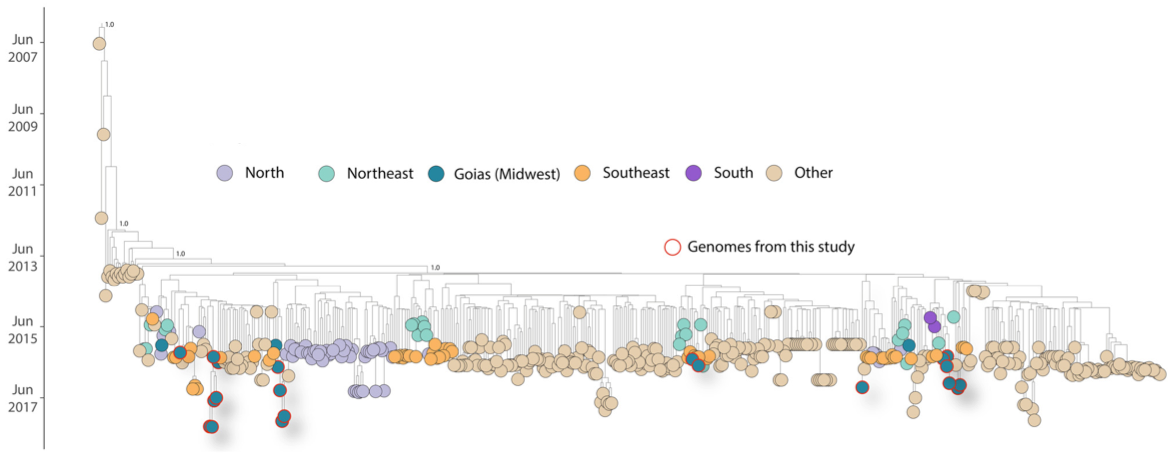Microbiol Spectr., 2022.
Authors: Giovanetti M, Pereira LA, Adelino TÉR, Fonseca V, Xavier J, de Araújo Fabri A, Slavov SN, da Silva Lemos P, de Almeida Marques W, Kashima S, Lourenço J, de Oliveira T, Campelo de Albuquerque CF, Freitas C, Peterka CRL, da Cunha RV, Mendonça AF, Lemes da Silva V, Alcantara LCJ.
Journal: Microbiol Spectr.,e0015522. doi: 10.1128/spectrum.00155-22: (2022)
S
Abstract
ince the introduction of the Zika virus (ZIKV) into Brazil in 2015, its transmission dynamics have been intensively studied in many parts of the country, although much is still unknown about its circulation in the midwestern states. Here, using nanopore technology, we obtained 23 novel partial and near-complete ZIKV genomes from the state of Goi?s, located in the Midwest of Brazil. Genomic, phylogenetic, and epidemiological approaches were used to retrospectively explore the spatiotemporal evolution of the ZIKV-Asian genotype in this region. As a likely consequence of a gradual accumulation of herd immunity, epidemiological data revealed a decline in the number of reported cases over 2018 to 2021. Phylogenetic reconstructions revealed that multiple independent introductions of the Asian lineage have occurred in Goi?s over time and revealed a complex transmission dynamic between epidemic seasons. Together, our results highlight the utility of genomic, epidemiological, and evolutionary methods to understand mosquito-borne epidemics.

